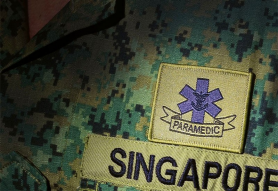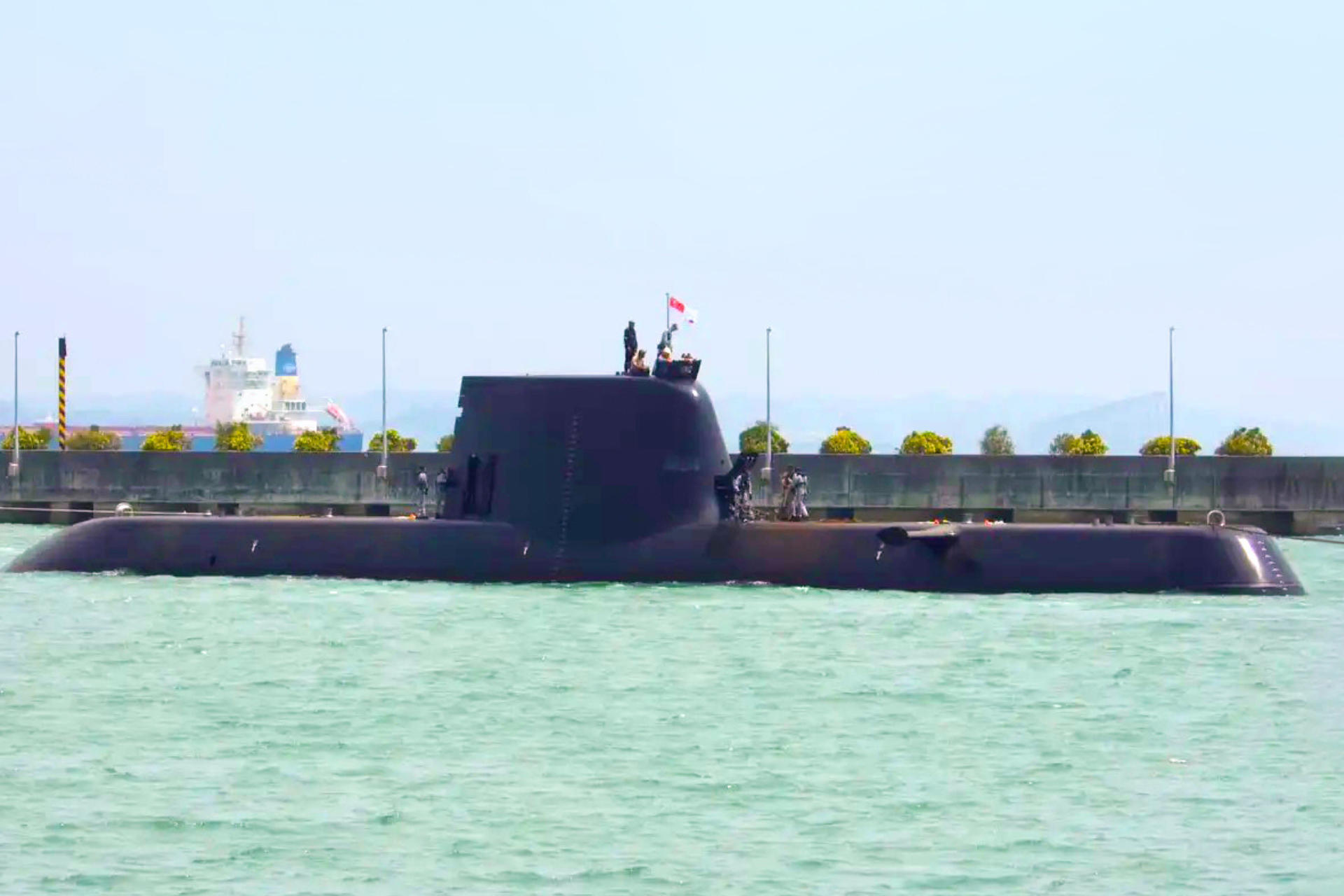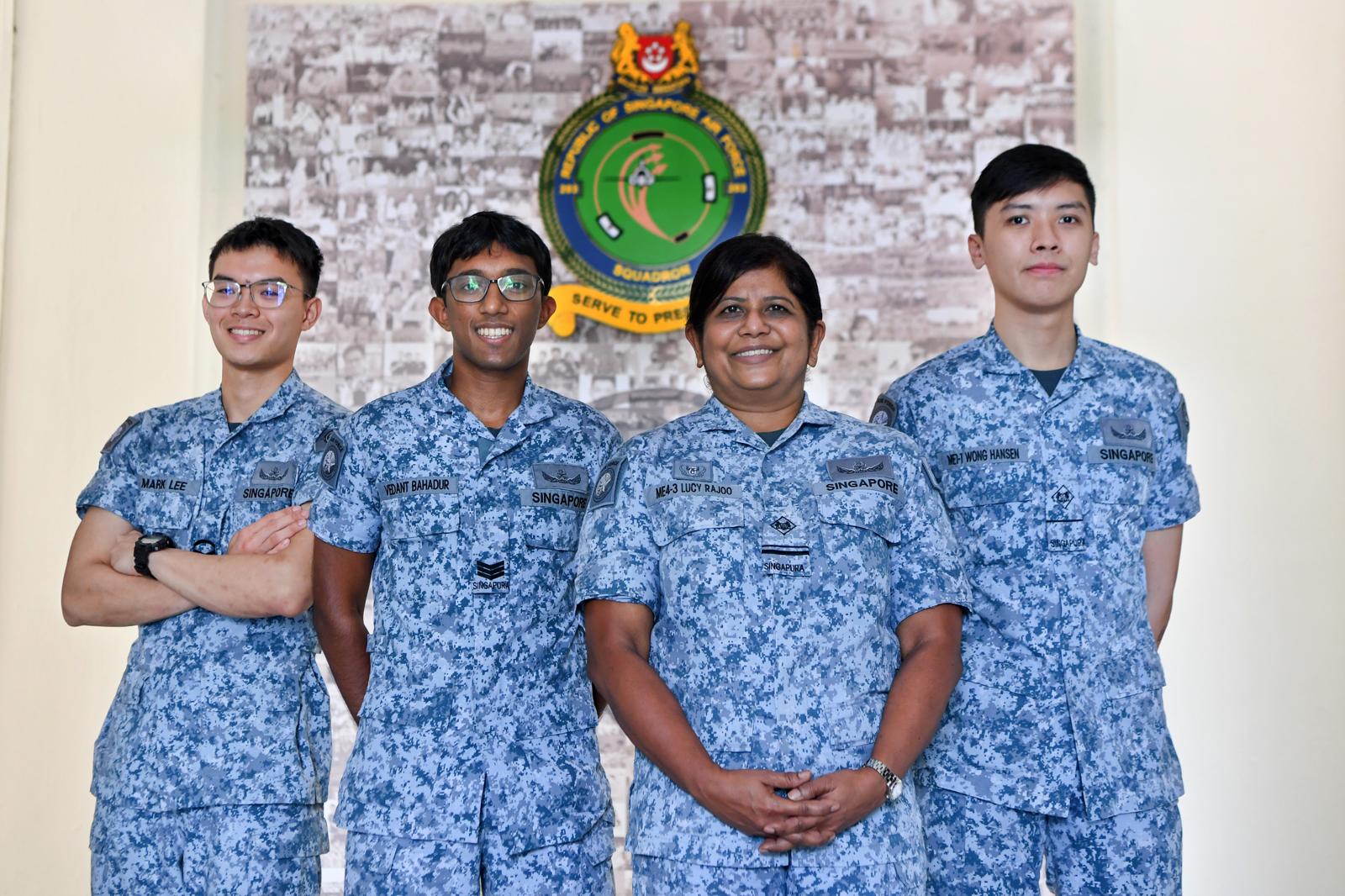BEHIND THE BADGE: PREPARED FOR EMERGENCIES
PHOTO // Chai Sian Liang
They cost just a few dollars, but soldiers of the Singapore Armed Forces (SAF) give sweat and tears to earn the right to wear them. In the second part of a series on skills and proficiency badges, PIONEER looks at medical and engineering skills badges.
Paramedic Badge
Who is eligible: SAF Regular medics and Singapore Civil Defence Force (SCDF) paramedics who successfully complete the Paramedic Level II Course.
What it takes: The gruelling Paramedic Level III Course, now known as the Emergency Medical Specialist (EMS) Course, is a qualification course designed to build medics' knowledge and prepare them to function as pre-hospital medical care providers. It trains medics to assess patients independently and diagnose a wide range of injuries and medical conditions.
Participants will be evaluated on both theory and practical skills. The course syllabus emphasises pathophysiology (the study of changes in normal body functions caused by diseases or abnormal syndromes), and includes ambulance and Accident & Emergency department attachments at hospitals.
The badge is awarded to personnel who achieve at least a 70 percent passing grade for all modules.
Established in: 1998
Course duration: Eight weeks
Participants per year: The SAF Medical Training Institute conducts one course annually, with up to 20 SAF and 10 SCDF participants.
Course pass rate: Varies from 85 to 100 percent.
Explosive Ordnance Disposal (EOD) Badge
Who is eligible: Full-timenational servicemen (NSFs) and Regular commanders in the SAF as well as personnel from foreign armies who are medically-fit,with Physical Employment Status (PES) B and above. Candidates must undergo a stringent selection process which includes an interview, a written psychological test and a practical situational test.
In the situational test, candidates must don a bomb suit, negotiate a set of obstacles and perform certain tasks within a time limit. Typically only 30 to 35 percent of candidates pass the psychological and situational tests.
What it takes: During the Engineer Commanders' Course (EOD), participants learn to search, detect and identify various explosives and ordnance, including improvised explosive devices (IEDs). They are also taught ways to recover, render safe and dispose of the explosive devices using myriad EOD equipment and robots.
This knowledge is put to practical use in scenario-based exercises, where they are evaluated on their tactical responses and skills in dealing with various EOD and IED incidents at the individual and section levels. Personnel must achieve a score of at least 75 percent for all tests to pass the course and earn the badge.
Established in: 1973
Course duration: Seven weeks
Participants per year: The course is conducted twice a year, with up to 20 participants each time.
Course pass rate: Varies from 80 to 95 percent.
Chemical Biological Radiological Disposal (CBRD) Badge
Who is eligible: NSFs and Regulars as well as foreign service personnel are eligible as long as they have at least a PES B and pass a selection process similar to that of the Engineer Commanders' Course (EOD).
What it takes: As CBRD responders are expected to handle hazardous materials, they must undergo acclimatisation training to build up their physical and heat endurance while operating in the heavy CBR suits (which can weigh up to 19kg).
In the Engineer Commanders' Course (CBRD), they are taught in-depth knowledge of CBR subjects, such as the fundamentals of radiation and the effects of weather and terrain on toxic agents.
Course participants are also required to pass their vocation obstacle course and apply their skills in operating CBR protective and detection equipment during various scenario-based exercises. They must attain at least a 75 percent score for each test to pass the course and qualify for the badge.
Established in: 2004
Course duration: Seven weeks
Participants per year: The course is conducted twice annually, with up to 36 participants per course.
Course pass rate: Typically 90 to 100 percent










